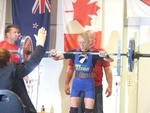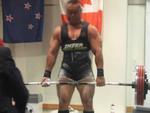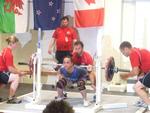| Competition Day
In previous articles I have focused on off season training and competition build up. This time of the year normally brings with it the first competitions for the year. This is usually the first chance for novices and seasoned lifters to get under the bar for the first time. The purpose of this article is to highlight some of the important things for you to consider on competition day.
EnteringBe aware of the competition date and entry requirements well in advance. I suggest lifters plan their competitive year in January and schedule events. Make it your own responsibility to enter the event on time. I have seen lifters disappointed when they miss deadlines and are unable to enter events. There is nothing more devastating more than this after the dedication of a lengthy build up.
Making weightLifters will often look to lift in a particular weight class. This is usually for competitive reasons or to break records or set personal records. Strategies to make weight will be the focus of a future article.
My advice to novice lifters is to lift in their natural weight class and not to drop too much weight in the days leading up to an event. This will lead to the inevitable loss of strength and stress. Restricting food intake on the morning of weigh in is fine if you need to lose a few hundred grams. Weight loss of a kilogram or more will take at least 12 hours and is best reserved until you have had a few competitions under your belt.
Let's assume that the weigh in is at 9 am in the morning. I suggest have a normal breakfast at about 7.30 am unless your weight is borderline. Then eat immediately after your weigh in.
Weighing inIPF events have a 90 minute weigh in period. The order is determined by lot draw. I suggest weighing as soon as you can so that you can eat. If you need to lose a few hundred grams following your weigh in then this is best achieved by some form of cardio that raises your body temperature. As noted above, any extreme attempt to lose too much weight should be avoided. |

The fitness site for today's active figures!
Sunday, April 28, 2024




